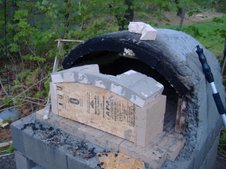 The Bernoulli equation can be seen as emblematic of a functioning society. It describes that there is only so much energy in a system and, although you can distribute the system’s energy in a number of ways (potential energy, pressure energy, and kinetic energy), is does not change the overall energy of the system, which remains constant.
The Bernoulli equation can be seen as emblematic of a functioning society. It describes that there is only so much energy in a system and, although you can distribute the system’s energy in a number of ways (potential energy, pressure energy, and kinetic energy), is does not change the overall energy of the system, which remains constant. You can add external energy to the system but, when you are on your own, you are on your own.
 Comair Flight 191 took off from the wrong runway, and created a tragedy. The principle of flight involves adding solar energy in the form of liquid fuel to the system consisting of the airplane. This solar energy is transformed to kinetic energy as the plane rolls down the runway, part of which is then converted to pressure energy.
Comair Flight 191 took off from the wrong runway, and created a tragedy. The principle of flight involves adding solar energy in the form of liquid fuel to the system consisting of the airplane. This solar energy is transformed to kinetic energy as the plane rolls down the runway, part of which is then converted to pressure energy. The wing’s airfoil creates a higher-kinetic energy situation above the wing, a resulting zone of relative low pressure, and the upward force that lifts the plane into the sky, adding potential energy to the equation. But if your runway is not long enough to generate the required amount of kinetic energy, it does not matter how hard you apply the flaps. The plane will fall out of the sky.
 Printing money, buying banks, and socializing losses will not add energy to our economy. These actions, in fact, do nothing other than add friction to the system, lowering overall energy levels. Examples of actions that would add energy to our financial system include imposing tariffs to generate cash while promoting domestic industry, and lifting environmental restrictions on industry, starting with the ban on oil shale exploration.
Printing money, buying banks, and socializing losses will not add energy to our economy. These actions, in fact, do nothing other than add friction to the system, lowering overall energy levels. Examples of actions that would add energy to our financial system include imposing tariffs to generate cash while promoting domestic industry, and lifting environmental restrictions on industry, starting with the ban on oil shale exploration.But national leadership is not talking about these things. They only speak of creating more friction, and accelerating the inevitable.








No comments:
Post a Comment